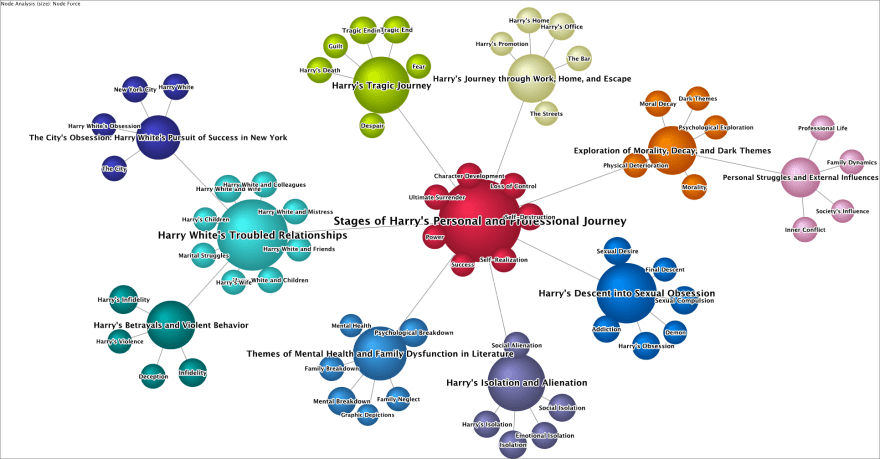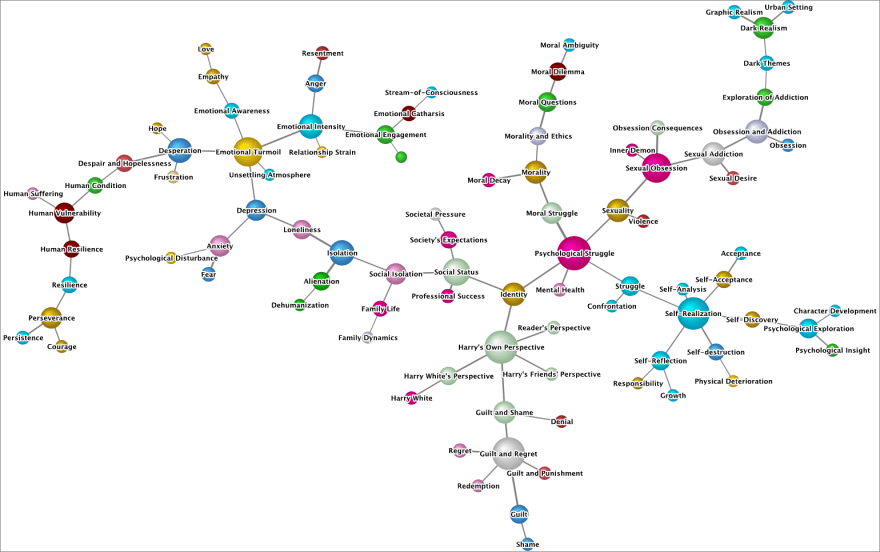Hubert Selby: The Demon (1976)

Welcome to our in-depth analysis of “The Demon” by Hubert Selby Jr. In this concise yet comprehensive section, we use Hellixia to facilitate a two-part exploration of this riveting novel.
First, we embark on a narrative analysis, dissecting the plot and characters to reveal the underlying themes that Selby skillfully interweaves throughout the story. This part offers a vivid glimpse into Selby’s dark and immersive world.
Next, we transition to a holistic analysis, where we zoom out to evaluate the novel’s broader philosophical and societal undertones. This segment intends to illuminate the novel’s intricate interplay of themes, values, and impacts, showcasing its rich complexity and literary significance.
Join us for this enriching journey that offers a fresh and insightful perspective on “The Demon”.
Narrative Analysis
In this first segment, we focus on the narrative intricacies of “The Demon”. Through Hellixia’s lens, we will dissect the vibrant characters and the entwined plot that makes Selby’s novel an evocative journey.
Workflow for Creating a Semantic Network
-
Start by creating the node “The Demon.”
-
Use the Dimension Elicitor, employing a broad array of keywords: Agents, Contexts, Developments, Entities, Events, Highlights, Keywords, Locations, Milestones, Motifs, Progressions, and Relationships. Set also the General Context to: “Hubert Selby Novel”
-
Inspect the dimensions returned by Hellixia and eliminate any that seem superfluous or unrelated to your analysis. Next, disregard the “The Demon” node and run the Embedding Generator on all remaining nodes to apprehend the semantic associations of their names and comments.
Please note that “The Demon” is not as widely recognized, and GPT might hallucinate, i.e., occasionally generate responses that align with other more prominent works by Selby, such as “Requiem for a Dream”. -
Use the Maximum Weight Spanning Tree algorithm to generate a semantic network.
-
Change node styles to Badges to ensure each node’s comment is visible. Then, apply the Dynamic Grid Layout to position the nodes on your graph; remember that this algorithm is not deterministic, and its orientation—vertical, horizontal, or mixed—is random. You might need to execute this layout several times to obtain an arrangement that aligns with your taste.
-
Switch over to Validation Mode
F5and select Skeleton View. Since your network doesn’t represent causal relations, Skeleton View will maintain only node connections without indicating a direction.

Workflow for Node Force Analysis
- Return to Modeling Mode
F4and alter the node styles to Discs. - Use the Symmetric Layout and switch to Validation Mode
F5to run a Node Force analysis.
Workflow for Creating the Hierarchical Semantic Network
- Execute Variable Clustering: This operation will categorize analogous variables based on semantic relationships.
-
Open the Class Editor and run Class Description Generator to generate descriptive names for the factors. Use the Export Descriptions function and save the newly created descriptions. - Return to Modeling Mode
F4and run Multiple Clustering to generate latent variables. -
Run the structural learning algorithm Taboo. Ensure the “Delete Unfixed Arcs” option is enabled.
- Use the descriptions you exported earlier as a Dictionary to rename the latent variables you’ve created.
- Switch to Validation and run Node Force.

Holistic Analysis
Moving forward, we transition to a more expansive view in our holistic analysis. Utilizing Hellixia, we aim to delve deeper, exploring the broader themes, societal influences, and underlying philosophies encapsulated in “The Demon”.
Follow the workflow outlined in the Narrative Analysis section, but use this set of keywords: Achievements, Characteristics, Components, Concepts, Considerations, Contributions, Domains, Elements, Emotions, Features, Feelings, Forces, Ideas, Impacts, Perspectives, Purposes, Sentiments, Subjects, Themes, Theses, Topics, and Values.
Semantic Network

Node Force analysis

